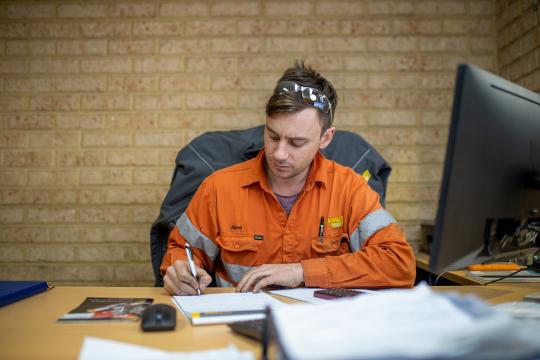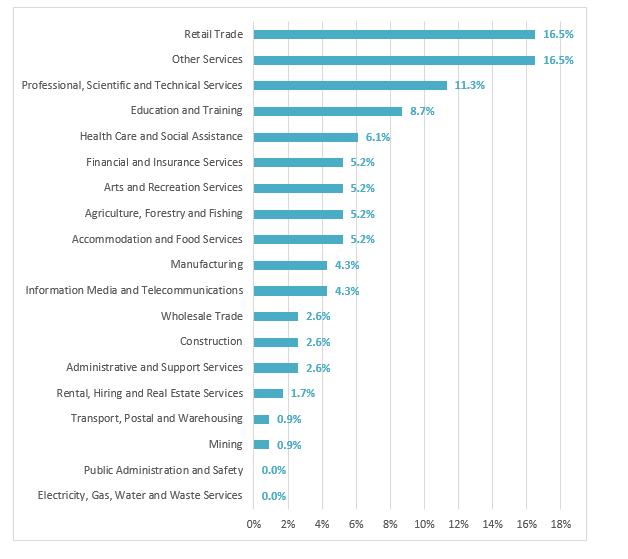
Each year we ask small business owners what they expect for the forthcoming year, in relation to:
- the impact of the economy on their business
- anticipated business profitability
- the cost of employing and retaining staff
- expected changes and challenges within their business.
Business expectations survey 2020 results
Our 2020 survey was completed by 115 respondents from small business across a range of sizes:
- 59 respondents had no employees
- 38 had 1-4 employees
- 13 had 5-19 employees
- 5 had 20+ employees

- Impact of the economy
- Overall sales/revenue
- Unit cost of materials and supplies
- Selling price
- Business profitability
- Cost of employing staff
- Ability to find and retain suitable staff
- Expected changes to the business
- Challenges for 2020
1. Impact of the economy
Respondents were asked whether they believed the economy would have a positive, negative or neutral impact on their businesses in 2020. In general, businesses owners feel optimistic about the economy, with 40.9 per cent expecting a positive impact, which remains largely the same as 2019. The level of negative sentiment has been declining for the past four years, and decreased from 40.2 per cent in 2019 to 34.8 per cent in 2020.
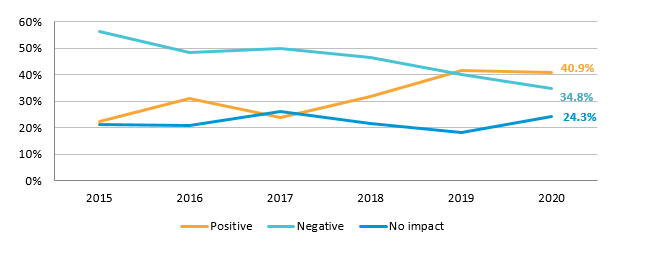
2. Overall sales/revenue
More than 57 per cent of respondents said they expected an increase in the overall sales/revenue of their business during the coming year, up from 41 per cent last year. While just over a quarter of respondents (26.1 per cent) indicated they expected their sales/revenue to remain relatively stable in 2020, and 16.5 per cent expected a decrease in the next 12 months (down from 29.2 per cent in 2019).
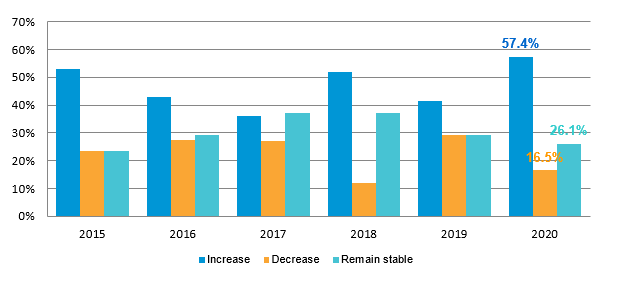
3. Unit cost of materials and supplies
The majority of respondents indicated that they expected the cost of materials and supplies to increase this year, up from 50 per cent in 2019 to 58.3 per cent in 2020. Just over a third are expecting costs to remain stable, while only 5.2 per cent anticipate a decrease.
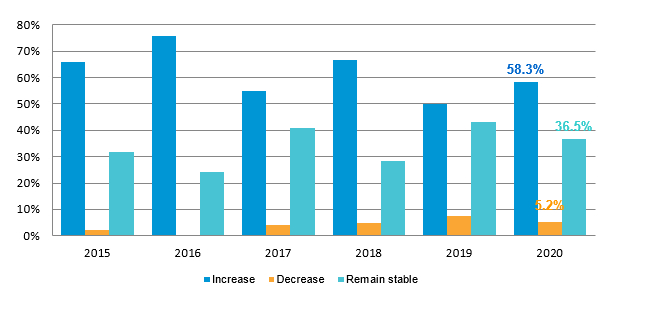
4. Selling price
This year sees 60 per cent of respondents expecting their selling prices to remain stable over the next 12 months, up from 51.2 per cent in 2019. Almost a third of respondents (32.3 per cent) are expecting an increase in their selling price, while 7.8 per cent expect their selling price to decrease.
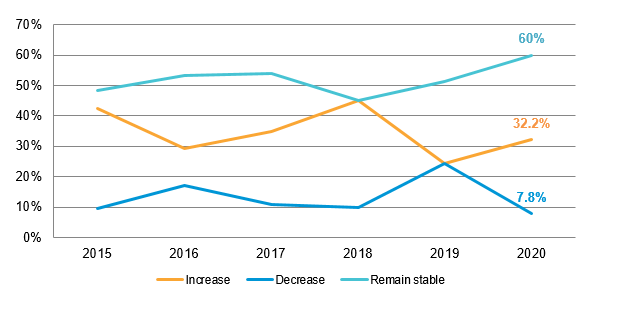
5. Business profitability
Respondents are generally optimistic about the expected profitability of their businesses, with half (50.4 per cent) expecting an increase in profitability in 2019, up from 39 per cent from 2019. Just under a quarter of respondents (22.6 per cent) anticipate a decrease in profitability for the year ahead to the lowest level in years, while 27 per cent are expecting profitability to remain stable.
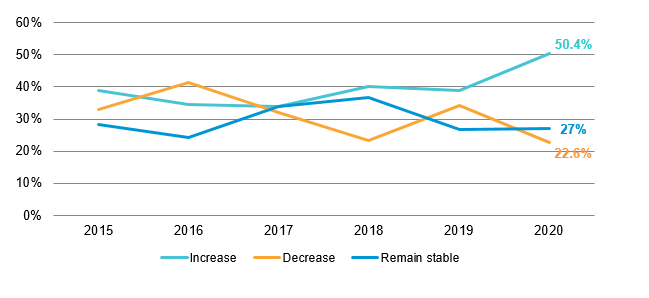
6. Cost of employing staff
This year sees over half of the respondents (57 per cent) expecting the cost of employing staff to increase in 2020, down from 72 per cent in 2019 and 60 per cent in 2018. Only 3 per cent of respondents see the cost of employing staff decreasing in 2020, while 40 per cent expect it to remain stable.
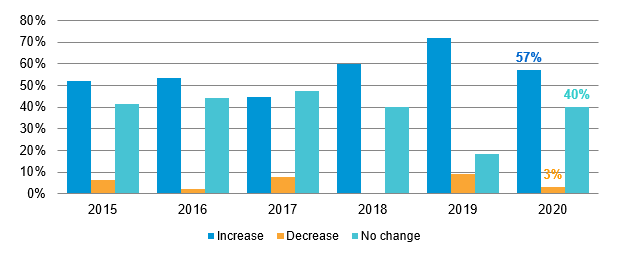
7. Ability to find and retain suitable staff
Just over half of the respondents (52.3 per cent) indicated they expect no change in the year ahead in terms of being able to find suitable staff. Only 9.3 per cent have indicated that it will be easier to find new employees (down from 18 per cent from 2019), while 38.4 per cent are expecting it to be more challenging (down from 45 per cent in 2019).
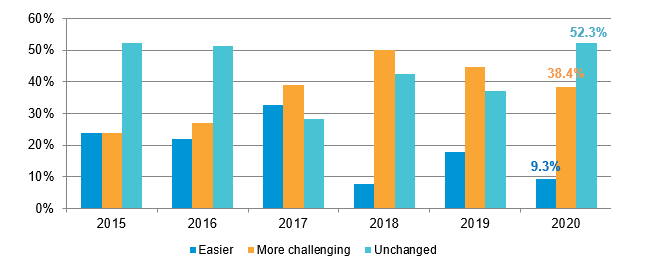
When asked about retaining suitable staff this year, 7.5 per cent of respondents indicated that it will be easier (down from 17 per cent from 2019), while just under two thirds of respondents (64.2 per cent) expected it to remain unchanged in 2020.
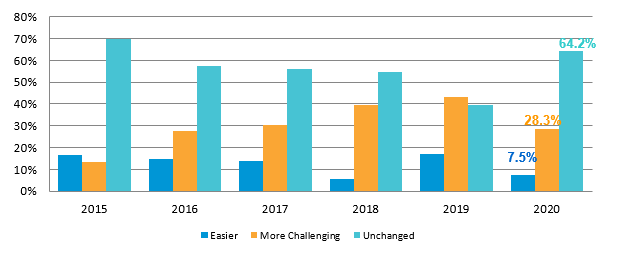
These two results point to an apparent tightening of the labour market and the potential squeeze on small businesses being able to find and retain suitably skilled staff over the coming year.
8. Expected changes to the business
Respondents were asked whether they had planned to make any changes to their business during 2020, and were presented with a list of possible options to choose from (multiple responses allowed).
The most common change reported this year (in line with previous years) was to increase their customer base (26 per cent), followed by exploring new markets (18 per cent) and update existing equipment or technology (13 per cent). Encouragingly, one in ten respondents indicated that they would employ more staff in the coming year (the same as last year). It is also interesting that 3.6 per cent of respondents indicated that they were not planning any changes to their business over the coming year.
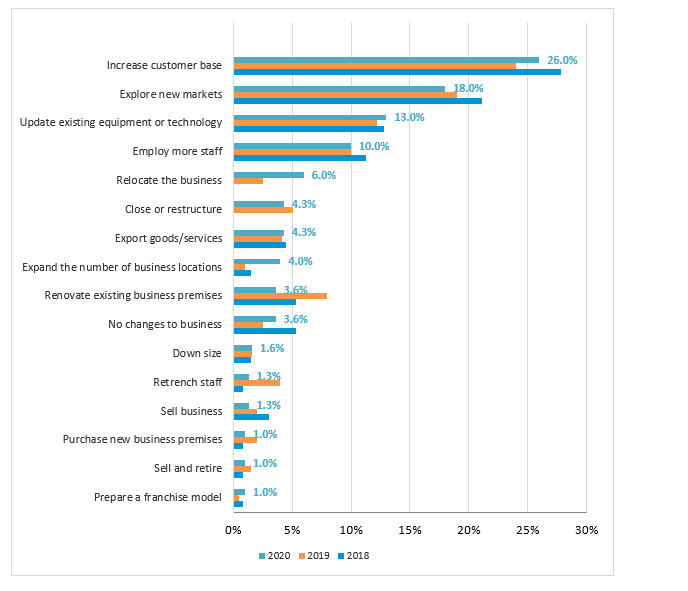
9. Challenges for 2020
Lastly, respondents were asked to indicate what their top three challenges would be for 2020 from a list of options. Respondents most commonly reported that attracting new customers would be a challenge for their business (15 per cent), followed by achieving/managing growth (14.7 per cent) and the state of the current economic climate (10.5 per cent). These results are similar to those found in 2019, with attracting new customers being the biggest challenge for each of the last four years.
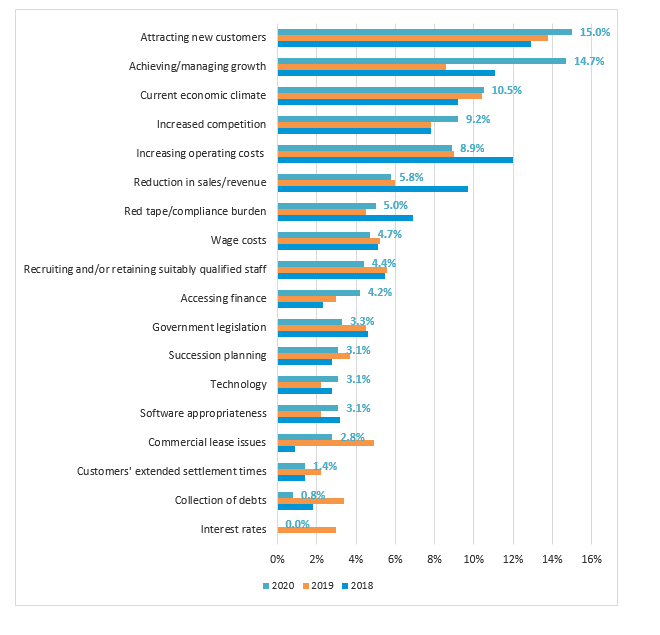
If you would like to participate in future surveys please contact us.



